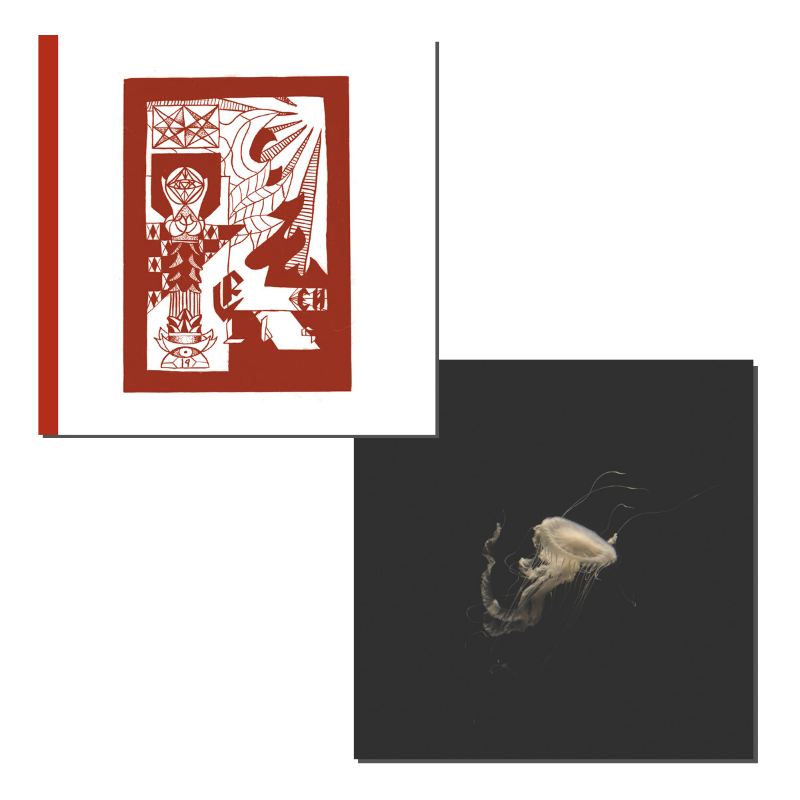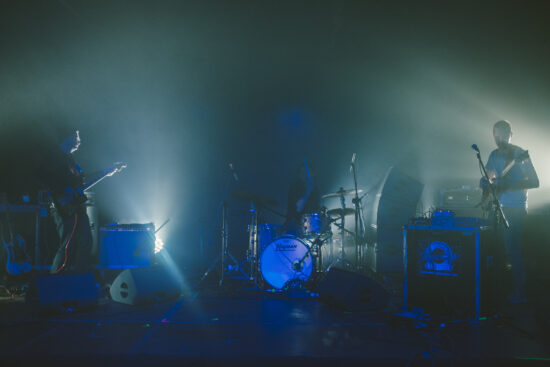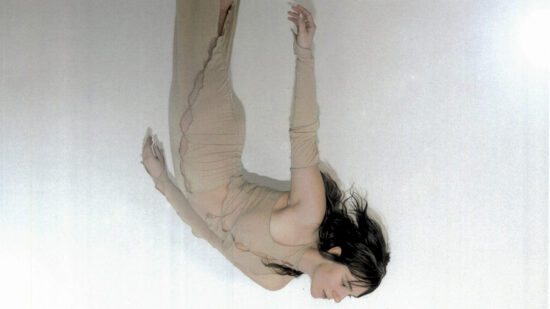Koma Saxo and E/I are pushing the boundaries of jazz, going beyond the traditional understanding of the genre – and bringing some fresh air to the European scene.
Translation: Aleksandra Szkudłapska
Like other genres, jazz also keeps pushing its boundaries, if it even still has any. A lot of records don’t even sound like jazz anymore, owing to their form and concept. A lot sound very refreshing. This year brought a number of intriguing albums, a lot happened on the European scene – it is worth checking out two groups exploring the edges of jazz, both of which offer an entirely innovative and energising approach to the genre.
Koma Saxo is Petter Eldh’s new project, an international quintet spread somewhere across Scandinavia and Berlin. The record was published in the super interesting label We Jazz cofounded by Matti Nives – I had the opportunity to meet him around a decade ago, when he was one of the people responsible for Flow Festival. Now he’s promoting the original scene from the region and beyond. Koma Saxo is a breath of fresh air. At first, it sounds like a loose take at the first albums by Jaga Jazzist or The Cinematic Orchestra, but the quintet fronted by the Swedish-born citizen of Berlin doesn’t try to revive these ideas or use samples. Everything is created live, so it is not as neatly arranged and tame, but at the same time the entire ensemble sounds like a brilliantly oiled machine. Christian Lillinger’s drums rumble through subsequent tracks like a steamroller, the snare sounds almost electronic (“Cyclops Dance”), with rhythmic structures emerging steadily. The trio of saxophonists are absolutely captivating – Otis Sandsjö and Jonas Kullhammar on tenor sax, and Mikko Innanen on alto and baritone keep trying to outshout each other, but don’t yield to the all-too-frequent free jazz disorder. They remain attentive to the drums and Eldh’s ever denser bass, which seems to keep the frenzied music in check. Koma Saxo is a youthful journey through various moods and directions – after moments of madness come moments of respite (“Byågz”), apart from the concise rhythm part and saxophone contortions, the band turns towards coherent, harmonious sounds. Sometimes it gets more lively, like an invitation to dance – the groove and harmony between the brass section is ace as they come together in the thick “Fanfarum For Komarum II”. The album is buzzing with ideas, but luckily the proportions are just right. The five piece know what they want to say and how, informed by the classical sound, but also the colourful harmony between instruments. Theirs is a mighty sound, they sometimes seem to be almost mathematically structured and coherent, which may be heard in the amazing orchestral moments of “Koma Tema”. This seems to be the secret of this record – a coherent narrative informed by various ideas, which are then filtered through the musicians’ technical skills, gaining a new quality as a result. This is one of the best jazz or near-jazz records I’ve heard, not just this year, but even in the course of the last couple of years. It is not often that I turn on an album and from the outset get carried away by something – idea, flow, dynamics and passion in the band – that keeps me absorbed until the very end. And then there’s the amazing cover, which perfectly portrays what’s inside: interesting, original music that just doesn’t let go.
E/I, on the other hand, is an entirely different dimension – this is the new ensemble of Szymon Gąsiorek (who also plays in Pimpono Ensemble or Franciszek Pospieszalski Sextet), which also functions on the entire continent, between Poland and Copenhagen. A lot has been written about Copenhagen being a preferred destination for young Polish musicians. Let me just remind you that apart from the aforementioned drummer, Kamil Piotrowicz, Franciszek Pospieszalski, Grzegorz Tarwid and Kuba Więcek, among others, have studied or are studying there. E/I is a half-Danish, half-Polish group, playing only Gąsiorek’s compositions. Where Koma Saxo’s record is pulsating, full of changes, crazy pace and fun, here the focus is on something completely different. The name of the band is an abbreviation of the title – Emission/Intention – a gradually evolving microorganism which keeps undergoing changes. Nicole Hogstrand’s cello and Asger Thomsen’s double bass are very important here – their lengthy strokes build increasing, drone-like phrases already in the opening track. The three saxophones add another layer, counterpointed by Gąsiorek on percussion instruments – their sound, a metallic coating encapsulating the track, reminds me of Tony Buck. This dark beginning foretells a thoroughly interesting album – smouldering under the surface, as if hiding its full sound, yet maintaining tension throughout. The dualism in the tracks is palpable: “Electronic/Instrumental” is built on the string section, stretched to the limits of sound, merging with the brass instruments, with the percussion barely audible in the background. The music resonates, like a dense sound-cloud, bringing an atmosphere of cinema noir, full of surprises and unobvious choices. There are no explosions, cumulations, multi-layered changes or dramatic twists here – but rather a focus on a single tone and its lasting nature, on cultivating minimalism and the monotonous resounding of instruments. The emission from the title, and the tension it builds. Gąsiorek and his sextet celebrate silence and concentration, introducing a meditative atmosphere, somewhat reminiscent of film scores. All instruments seem to be looking for harmony in “Electronic/Instrumental”, only to offer a brilliant breakthrough after the long wait in “Emotional/Intellectual”, which seems to be the most diverse moment on the album, followed by the heaviest, even folk-like “External/Internal”. Ultimately, the rhythm comes to the fore, among a cavalcade of string instruments interspersed by the brass section. The whole thing is buzzing and piercing, until another surprising finale. This is playing with the emission of sound, controlled, but gaining the form of contemporary ambient or slightly spiritual jazz, without any twists and turns coming to get you. A contemplation of musical possibilities, discovering the different tones and timbres offered by the instruments and celebrating their harmony. And terribly captivating at that.
Koma Saxo, Koma Saxo, We Jazz
E/I, Emission/Intention, Love & Beauty Music




